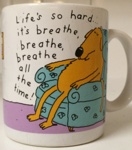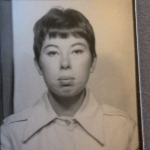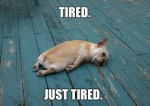Stunned... Can this possibly be right???
Stunned... Can this possibly be right???
A few years ago I had all the classic OSA symptoms. Chronic tiredness, irresistible sleepiness during long drives, afternoon naps on the floor of my office, falling asleep watching TV, snoring, and people telling me that I stop breathing, gasp, choke, and snore when I sleep. I got a Respironics M series auto-bipap off craigslist and a full face mask, tried it out, and had AHIs in the 40s - 60s with the max set down in the 8 - 12 range. Once I raised the max up to around 18 I finally got AHIs in the 1.x to 2.x range, and I immediately felt more energetic and rested and I no longer fell asleep or took naps during the day.
Since then, several things have happened:
I upgraded to a System One Auto BiPap.
I changed from a full face mask to the AirFit P10 with nasal pillows.
I told a primary care doctor that my nose is typically clogged and I mouth breathe during the day, but the nasal pillows and sometimes irrigation open it up at night. He put me on Flonase and referred me to an ENT.
The ENT examined me and determined:
1) The base of my tongue is high and abnormally close to the roof of my mouth leaving only a small airway in the mouth.
2) I have a mild to moderately deviated septum in both nasal passages and moderately enlarged turbinates.
3) I am a potential candidate for septoplasty and turbinate reduction (and UPPP though he does not recommend it).
Okay, so after all that I decided to see if I could get a BiPAP prescription from the primary care doctor if I brought in my SleepyHead reports showing low pressure vs my normal effective pressure settings. Last night I set my BiPAP down to 4cm / 6cm, put on my nasal pillows and chinstrap, and went to sleep. This morning I downloaded my card expecting to see a train wreck of a night and my AHI was only 5.14!!!
What the heck happened?!?!!? I've been thinking about this all day. I can't have been mistaken about my original self-diagnosis of OSA... there were just too many signs, eyewitnesses, original nights of data, and quality of life improvement for that to have been a mistake. The only explanation I've come up with so far is this:
I might have had clogged nasal passages (from the deviated septum and enlarged turbinates) and a small oral airway (from the high tongue base) while starting out. That, combined with the use of a full face mask, caused difficulty breathing through either airway and a high AHI. Since then, the regular use of Flonase and nasal pillows has opened up my nasal passages, I've learned over time to keep my tongue forward toward the roof of my mouth to minimize chipmunk cheeks and motorboat lips, and the air pressure from my nasal passages helps push the tongue forward and out of my throat. All combined, that adds up to a fairly clear nasal airway with very little pressure.
Does that sound likely to anyone else? Is there a better explanation for this? And if this is correct, should I pursue the septoplasty and turbinate reduction to better open my nasal passages? There isn't much that can easily be done about the high tongue base, but perhaps fixing the nasal passages could make a bigger difference than I originally thought.
Since then, several things have happened:
I upgraded to a System One Auto BiPap.
I changed from a full face mask to the AirFit P10 with nasal pillows.
I told a primary care doctor that my nose is typically clogged and I mouth breathe during the day, but the nasal pillows and sometimes irrigation open it up at night. He put me on Flonase and referred me to an ENT.
The ENT examined me and determined:
1) The base of my tongue is high and abnormally close to the roof of my mouth leaving only a small airway in the mouth.
2) I have a mild to moderately deviated septum in both nasal passages and moderately enlarged turbinates.
3) I am a potential candidate for septoplasty and turbinate reduction (and UPPP though he does not recommend it).
Okay, so after all that I decided to see if I could get a BiPAP prescription from the primary care doctor if I brought in my SleepyHead reports showing low pressure vs my normal effective pressure settings. Last night I set my BiPAP down to 4cm / 6cm, put on my nasal pillows and chinstrap, and went to sleep. This morning I downloaded my card expecting to see a train wreck of a night and my AHI was only 5.14!!!
What the heck happened?!?!!? I've been thinking about this all day. I can't have been mistaken about my original self-diagnosis of OSA... there were just too many signs, eyewitnesses, original nights of data, and quality of life improvement for that to have been a mistake. The only explanation I've come up with so far is this:
I might have had clogged nasal passages (from the deviated septum and enlarged turbinates) and a small oral airway (from the high tongue base) while starting out. That, combined with the use of a full face mask, caused difficulty breathing through either airway and a high AHI. Since then, the regular use of Flonase and nasal pillows has opened up my nasal passages, I've learned over time to keep my tongue forward toward the roof of my mouth to minimize chipmunk cheeks and motorboat lips, and the air pressure from my nasal passages helps push the tongue forward and out of my throat. All combined, that adds up to a fairly clear nasal airway with very little pressure.
Does that sound likely to anyone else? Is there a better explanation for this? And if this is correct, should I pursue the septoplasty and turbinate reduction to better open my nasal passages? There isn't much that can easily be done about the high tongue base, but perhaps fixing the nasal passages could make a bigger difference than I originally thought.
Re: Stunned... Can this possibly be right???
I can't reply to the other questions but I would suggest getting a second opinion. I've read many stories of people having the surgery and thinking it was a cure at the beginning only to find out later that they were back to where they started or worse. I have no experience with it whatsoever but when I saw the ENT the other day, he mentioned the surgery as being a possibility but clearly advised against it. He said it is painful, of limited success and unlikely to be a long term solution.
_________________
| Machine: PR System One REMStar 60 Series Auto CPAP Machine |
| Mask: DreamWear Nasal CPAP Mask with Headgear |
| Additional Comments: PR S1 60 Series Auto CPAP, using SleepyHead software |
- Wulfman...
- Posts: 6688
- Joined: Mon Sep 01, 2014 6:41 pm
- Location: Nearest fishing spot
Re: Stunned... Can this possibly be right???
I think you're trying to "connect dots" that aren't or shouldn't be connected.djhall wrote:A few years ago I had all the classic OSA symptoms. Chronic tiredness, irresistible sleepiness during long drives, afternoon naps on the floor of my office, falling asleep watching TV, snoring, and people telling me that I stop breathing, gasp, choke, and snore when I sleep. I got a Respironics M series auto-bipap off craigslist and a full face mask, tried it out, and had AHIs in the 40s - 60s with the max set down in the 8 - 12 range. Once I raised the max up to around 18 I finally got AHIs in the 1.x to 2.x range, and I immediately felt more energetic and rested and I no longer fell asleep or took naps during the day.
Since then, several things have happened:
I upgraded to a System One Auto BiPap.
I changed from a full face mask to the AirFit P10 with nasal pillows.
I told a primary care doctor that my nose is typically clogged and I mouth breathe during the day, but the nasal pillows and sometimes irrigation open it up at night. He put me on Flonase and referred me to an ENT.
The ENT examined me and determined:
1) The base of my tongue is high and abnormally close to the roof of my mouth leaving only a small airway in the mouth.
2) I have a mild to moderately deviated septum in both nasal passages and moderately enlarged turbinates.
3) I am a potential candidate for septoplasty and turbinate reduction (and UPPP though he does not recommend it).
Okay, so after all that I decided to see if I could get a BiPAP prescription from the primary care doctor if I brought in my SleepyHead reports showing low pressure vs my normal effective pressure settings. Last night I set my BiPAP down to 4cm / 6cm, put on my nasal pillows and chinstrap, and went to sleep. This morning I downloaded my card expecting to see a train wreck of a night and my AHI was only 5.14!!!
What the heck happened?!?!!? I've been thinking about this all day. I can't have been mistaken about my original self-diagnosis of OSA... there were just too many signs, eyewitnesses, original nights of data, and quality of life improvement for that to have been a mistake. The only explanation I've come up with so far is this:
I might have had clogged nasal passages (from the deviated septum and enlarged turbinates) and a small oral airway (from the high tongue base) while starting out. That, combined with the use of a full face mask, caused difficulty breathing through either airway and a high AHI. Since then, the regular use of Flonase and nasal pillows has opened up my nasal passages, I've learned over time to keep my tongue forward toward the roof of my mouth to minimize chipmunk cheeks and motorboat lips, and the air pressure from my nasal passages helps push the tongue forward and out of my throat. All combined, that adds up to a fairly clear nasal airway with very little pressure.
Does that sound likely to anyone else? Is there a better explanation for this? And if this is correct, should I pursue the septoplasty and turbinate reduction to better open my nasal passages? There isn't much that can easily be done about the high tongue base, but perhaps fixing the nasal passages could make a bigger difference than I originally thought.
In my opinion (and similar comments from a shithead sleep doctor looking in MY throat), the back of the throat doesn't mean much with regard to air going into the lungs from the nose. It's a slightly different air passageway.
Also, the settings on your BiPAP are STILL providing some therapy........and the difference between the 1's and 2's and 5+ doesn't necessarily mean a whole lot. The pressure requirements may not be a direct correlation.
Den
.
(5) REMstar Autos w/C-Flex & (6) REMstar Pro 2 CPAPs w/C-Flex - Pressure Setting = 14 cm.
"Passover" Humidification - ResMed Ultra Mirage FF - Encore Pro w/Card Reader & MyEncore software - Chiroflow pillow
User since 05/14/05
"Passover" Humidification - ResMed Ultra Mirage FF - Encore Pro w/Card Reader & MyEncore software - Chiroflow pillow
User since 05/14/05
Re: Stunned... Can this possibly be right???
Odds are your Dianosis is more about your ability to pay. Jim
Use data to optimize your xPAP treatment!
"The art of medicine consists in amusing the patient while nature cures the disease." Voltaire
"The art of medicine consists in amusing the patient while nature cures the disease." Voltaire
-
Guest
Re: Stunned... Can this possibly be right???
Agreed, but I thought it might explain why I previously had much worse AHIs at lower pressures when I was trying to use a full face mask and mouth breathe.Wulfman... wrote:In my opinion (and similar comments from a shithead sleep doctor looking in MY throat), the back of the throat doesn't mean much with regard to air going into the lungs from the nose. It's a slightly different air passageway.
Yes, the lower settings are still providing some therapy, but given that I was getting AHIs > 60 at those settings before with the full face mask, I assumed the numbers would be much worse than 5 with the nasal mask. It is the incredible difference between two years ago with the full face at low pressures and today with the nasal pillows at low pressure that is so surprising to me.Wulfman... wrote:Also, the settings on your BiPAP are STILL providing some therapy........and the difference between the 1's and 2's and 5+ doesn't necessarily mean a whole lot. The pressure requirements may not be a direct correlation.
-
Guest
Re: Stunned... Can this possibly be right???
Are you referring to the septoplasty / turbinate reduction or the UPPP? I know the UPPP is notorious for being painful and ineffective and I have no interest in trying it.curems wrote:I've read many stories of people having the surgery and thinking it was a cure at the beginning only to find out later that they were back to where they started or worse. I have no experience with it whatsoever but when I saw the ENT the other day, he mentioned the surgery as being a possibility but clearly advised against it. He said it is painful, of limited success and unlikely to be a long term solution.
My understanding is that septoplasty and turbinate reduction is not quite as bad and is often effective at enabling people to comfortably breathe through their nose (though that isn't expected to have an effect on sleep apnea).
- BlackSpinner
- Posts: 9742
- Joined: Sat Apr 25, 2009 5:44 pm
- Location: Edmonton Alberta
- Contact:
Re: Stunned... Can this possibly be right???
Leave it there for a couple of nights. For some people there is a carry over effect where your body seems to remember how to keep your throat open. That is why they tell people to get off cpap for a week before being re-tested.Guest wrote: Yes, the lower settings are still providing some therapy, but given that I was getting AHIs > 60 at those settings before with the full face mask, I assumed the numbers would be much worse than 5 with the nasal mask. It is the incredible difference between two years ago with the full face at low pressures and today with the nasal pillows at low pressure that is so surprising to me.
_________________
| Machine: PR System One REMStar 60 Series Auto CPAP Machine |
| Additional Comments: Quatro mask for colds & flus S8 elite for back up |
71. The lame can ride on horseback, the one-handed drive cattle. The deaf, fight and be useful. To be blind is better than to be burnt on the pyre. No one gets good from a corpse. The Havamal
- chunkyfrog
- Posts: 34544
- Joined: Mon Jul 12, 2010 5:10 pm
- Location: Nowhere special--this year in particular.
Re: Stunned... Can this possibly be right???
I can't help thinking this might be creation of insurance claims gatekeepers.BlackSpinner wrote: . . . a carry over effect where your body seems to remember how to keep your throat open. That is why they tell people to get off cpap for a week before being re-tested.
It certainly would work if that was the objective.
_________________
| Mask: AirFit™ P10 For Her Nasal Pillow CPAP Mask with Headgear |
| Additional Comments: Airsense 10 Autoset for Her |
Re: Stunned... Can this possibly be right???
My ENT was referring to both.Guest wrote:Are you referring to the septoplasty / turbinate reduction or the UPPP? I know the UPPP is notorious for being painful and ineffective and I have no interest in trying it.curems wrote:I've read many stories of people having the surgery and thinking it was a cure at the beginning only to find out later that they were back to where they started or worse. I have no experience with it whatsoever but when I saw the ENT the other day, he mentioned the surgery as being a possibility but clearly advised against it. He said it is painful, of limited success and unlikely to be a long term solution.
My understanding is that septoplasty and turbinate reduction is not quite as bad and is often effective at enabling people to comfortably breathe through their nose (though that isn't expected to have an effect on sleep apnea).
_________________
| Machine: PR System One REMStar 60 Series Auto CPAP Machine |
| Mask: DreamWear Nasal CPAP Mask with Headgear |
| Additional Comments: PR S1 60 Series Auto CPAP, using SleepyHead software |
Re: Stunned... Can this possibly be right???
I wouldn't plan to be a habitual user of Flonase, I've read for some time that the body can become dependent on decongestants and have several negative long term effects. Have you ever tried "Breathe Right" nasal strips ? They can work wonders for enlarging narrow passages.
_________________
| Mask: ResMed AirFit™ F20 Full Face CPAP Mask with Headgear |
| Humidifier: S9™ Series H5i™ Heated Humidifier with Climate Control |
Re: Stunned... Can this possibly be right???
I had a septoplasty and turbinate reduction and had very minimal pain. Unfortunately, it only improved breathing mildly but many people have greatly benefited and found it improve their pap therapy.curems wrote:My ENT was referring to both.Guest wrote:Are you referring to the septoplasty / turbinate reduction or the UPPP? I know the UPPP is notorious for being painful and ineffective and I have no interest in trying it.curems wrote:I've read many stories of people having the surgery and thinking it was a cure at the beginning only to find out later that they were back to where they started or worse. I have no experience with it whatsoever but when I saw the ENT the other day, he mentioned the surgery as being a possibility but clearly advised against it. He said it is painful, of limited success and unlikely to be a long term solution.
My understanding is that septoplasty and turbinate reduction is not quite as bad and is often effective at enabling people to comfortably breathe through their nose (though that isn't expected to have an effect on sleep apnea).
Prior to the septoplasty, I had a moderate RDI and mild AHI. Recent sleep study came up with a moderate AHI with no RERAs. So obviously, the surgery had no impact on reducing the sleep breathing events and I never expected it would.
49er
_________________
| Mask: SleepWeaver Elan™ Soft Cloth Nasal CPAP Mask - Starter Kit |
| Humidifier: S9™ Series H5i™ Heated Humidifier with Climate Control |
| Additional Comments: Use SleepyHead |
Re: Stunned... Can this possibly be right???
Not surprisng to me. There is a vast difference for me in treatment via mouth breathing vs. treatment via nasal breathing. Also, the same is true in supine and REM. I too believe that we condition to the better outcome of treatment along with some reduced inflammation in soft tissues after treatment. Just a theory.Agreed, but I thought it might explain why I previously had much worse AHIs at lower pressures when I was trying to use a full face mask and mouth breathe.
Yes, the lower settings are still providing some therapy, but given that I was getting AHIs > 60 at those settings before with the full face mask, I assumed the numbers would be much worse than 5 with the nasal mask. It is the incredible difference between two years ago with the full face at low pressures and today with the nasal pillows at low pressure that is so surprising to me.
Best,
Mike
_________________
| Mask: AirFit™ P10 Nasal Pillow CPAP Mask with Headgear |
| Humidifier: S9™ Series H5i™ Heated Humidifier with Climate Control |
| Additional Comments: APAP 8.6-11.4, EPR 3 |
Re: Stunned... Can this possibly be right???
For what it's worth djhall, my sister's ENT did not recommend surgery for correcting issues better corrected by cpap or bipap because overall, they are unsuccessful. My sister was just fortunate. She had her deviated septum corrected because she was having breathing problems in the daytime which was interfering with her job. That was fixed and she found she also didn't need a cpap.
Also one night is not a tell-all. Many people who have been receiving therapy for a long time do fine for a night or two and then BLAM, miserable night.
Also one night is not a tell-all. Many people who have been receiving therapy for a long time do fine for a night or two and then BLAM, miserable night.
_________________
| Mask: AirFit™ P10 Nasal Pillow CPAP Mask with Headgear |
| Additional Comments: Sleepyhead |
Diabetes 2, RLS & bradycardia
Airsense For Her; Settings: range 8-12, Airfit P10 (M)
Airsense For Her; Settings: range 8-12, Airfit P10 (M)
- Whale Road
- Posts: 33
- Joined: Tue Aug 25, 2015 9:44 am
Re: Stunned... Can this possibly be right???
lolWulfman... wrote:In my opinion (and similar comments from a shithead sleep doctor looking in MY throat), the back of the throat doesn't mean much with regard to air going into the lungs from the nose. It's a slightly different air passageway.
This is a basic misunderstanding of anatomy. Both air from the nostril and air from the mouth must pass through that same space. The doctor is right to look at the thickness of the tongue base and make an educated judgment on what is causing the blockages. See http://www.beverlyhillstmjheadachepain. ... ati-score/
But such an examination is secondary to a sleep study in diagnosing obstructive sleep apnea.
This surgery should be seriously considered. It makes a big improvement in quality of life for many people.I have a mild to moderately deviated septum in both nasal passages and moderately enlarged turbinates.
UPPP should be considered in only the most extreme cases, which is not you.
Re: Stunned... Can this possibly be right???
I don't care about using CPAP for the rest of my life. I'm fine with that. The surgical option is simply for the ability to breathe through the nose.SewTired wrote:For what it's worth djhall, my sister's ENT did not recommend surgery for correcting issues better corrected by cpap or bipap because overall, they are unsuccessful. My sister was just fortunate. She had her deviated septum corrected because she was having breathing problems in the daytime which was interfering with her job. That was fixed and she found she also didn't need a cpap.
However, breathing through my nose is related to CPAP. Really, why do I need to be able to breathe through my nose when I have a perfectly good mouth? Until yesterday I thought the only benefit to nose breathing was the ability to use nasal pillows instead of a full face mask. And if the problem is my tongue falling into the back of the throat where it blocks both mouth and nasal airways then mouth/nasal breathing and full face/nasal masks are only matters of convenience and comfort.
However, it now appears that I might breathe vastly better at night through my nose (when I can) than through my mouth. If that is the case, it might be much more important to be able to breathe well through my nose, even if only to allow the CPAP to do its work better.















